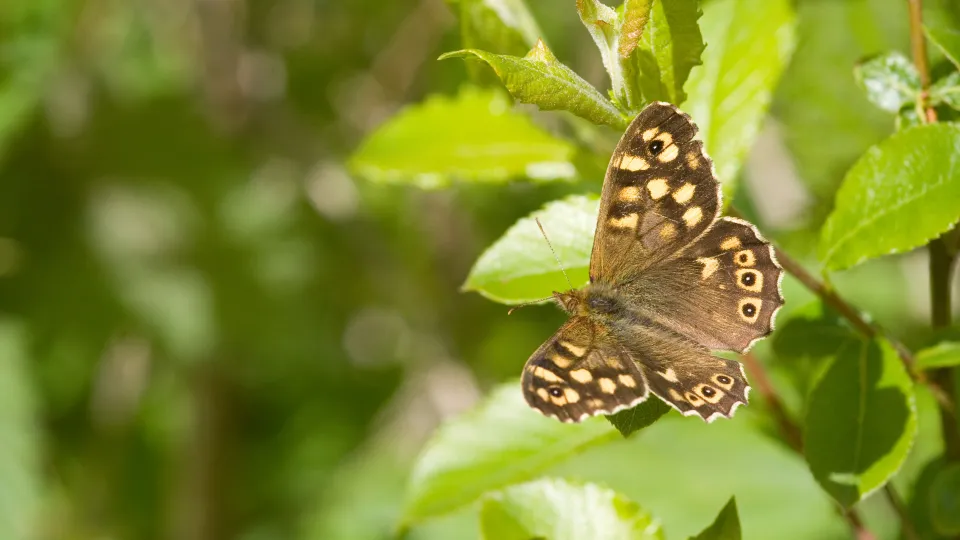
Speckled wood
The speckled wood prefers the dappled sunlight of woodland rides and edges, hedgerows and even gardens. Despite declines, its range has spread over recent years.

The speckled wood prefers the dappled sunlight of woodland rides and edges, hedgerows and even gardens. Despite declines, its range has spread over recent years.
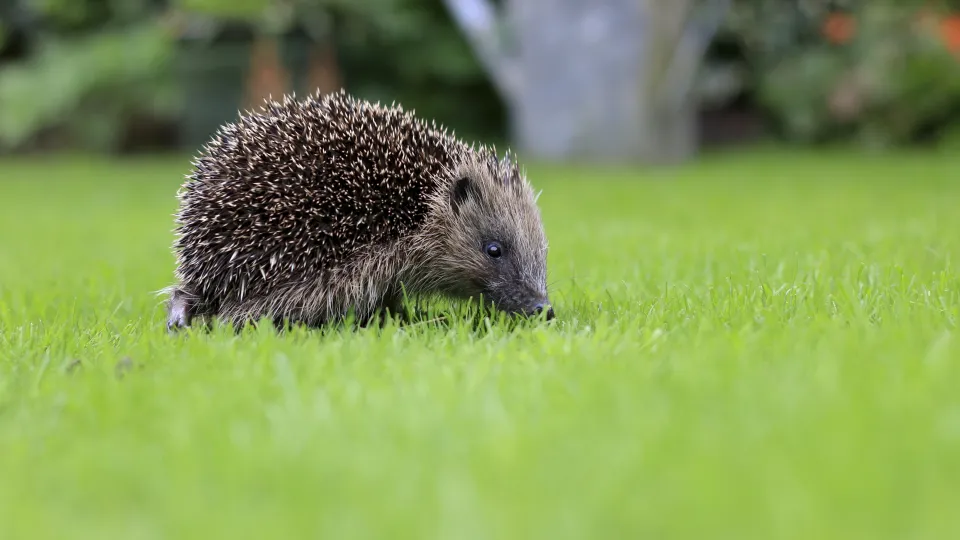
Considered a gardener’s best friend, hedgehogs will happily hoover up insects roaming in vegetable beds. Famously covered in spines, hedgehogs like to eat all sorts of bugs and crunchy beetles. They are most active at night and hibernate through winter.
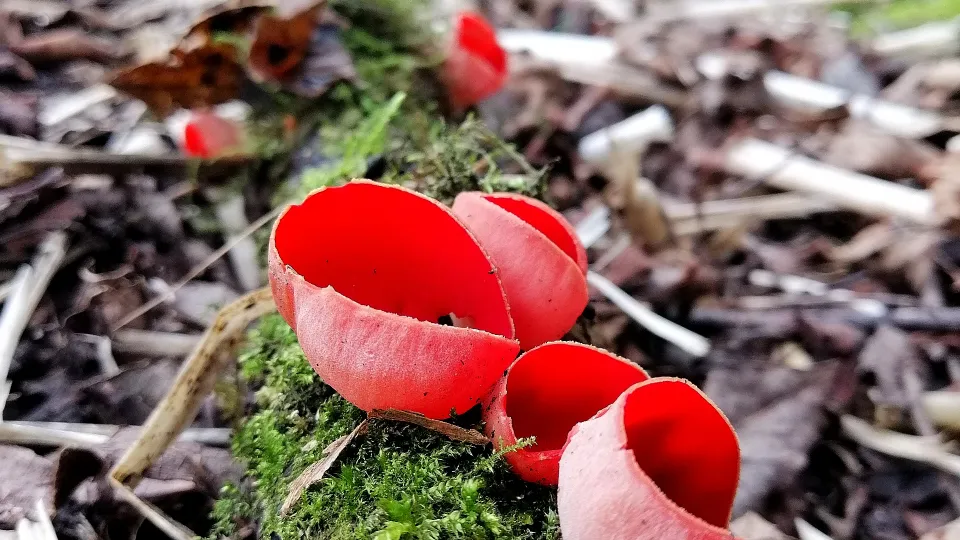
As its name suggests, the scarlet elfcup is a bright red, cup-shaped fungus. It is widespread, but scarce, and can be found on fallen twigs and branches, in shady, damp places.
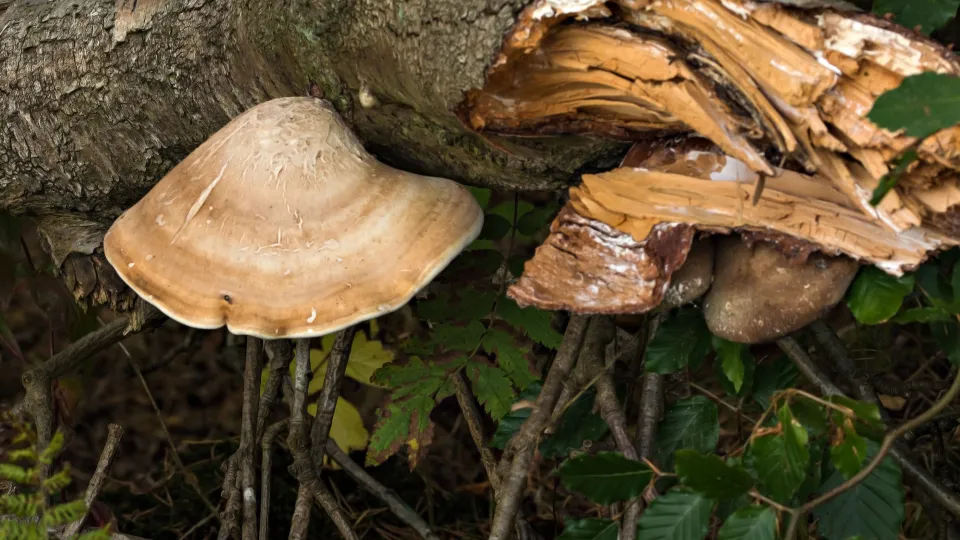
The birch polypore only grows on Birch trees. This leathery bracket fungus has a rounded, coffee-coloured cap that was once used for sharpening tools, hence its other name: the 'Razorstrop fungus'.
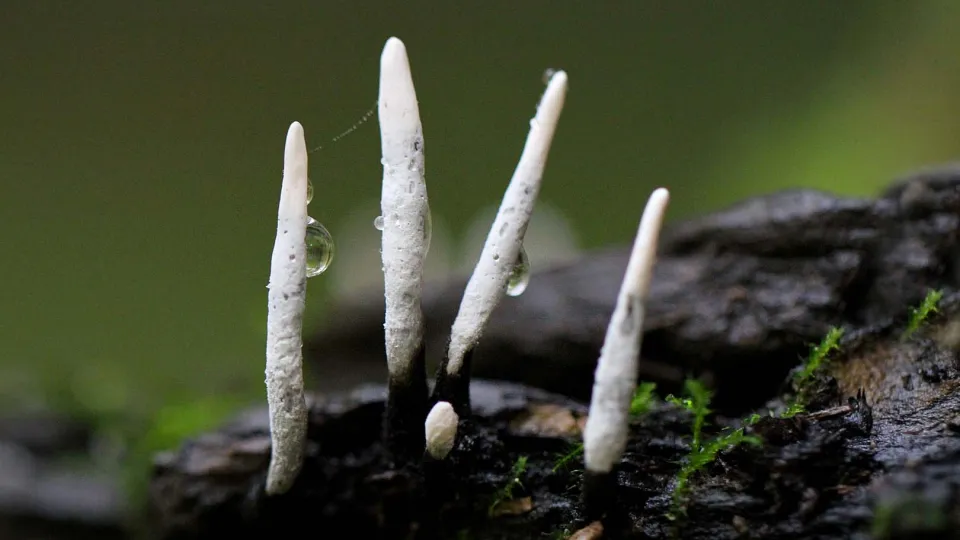
The candlesnuff fungus is very common. It has an erect, stick-like or forked fruiting body with a black base and white, powdery tip. It grows on dead and rotting wood.
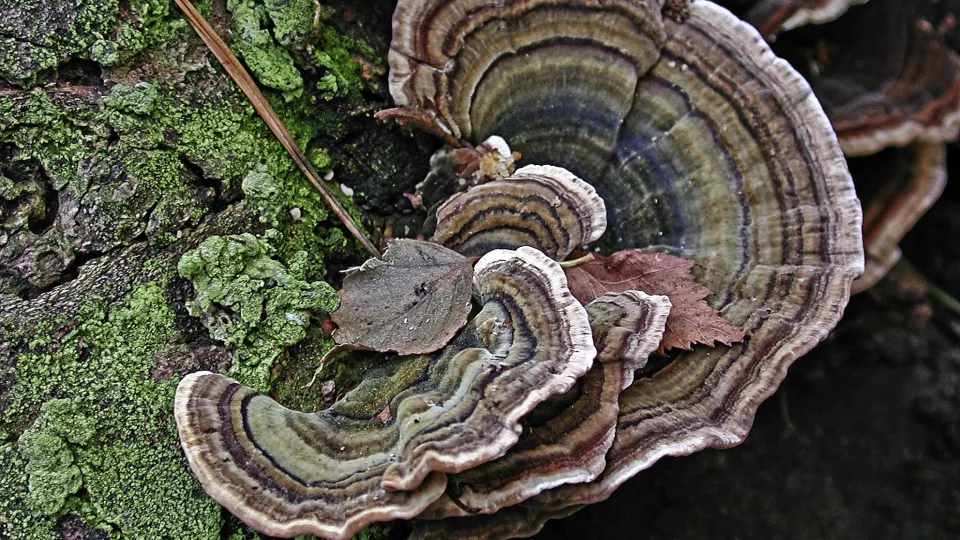
The turkeytail is a very colourful bracket fungus that grows throughout the year, but is at its best in the autumn. Its circular caps can be seen growing in tiers on trees and dead wood.
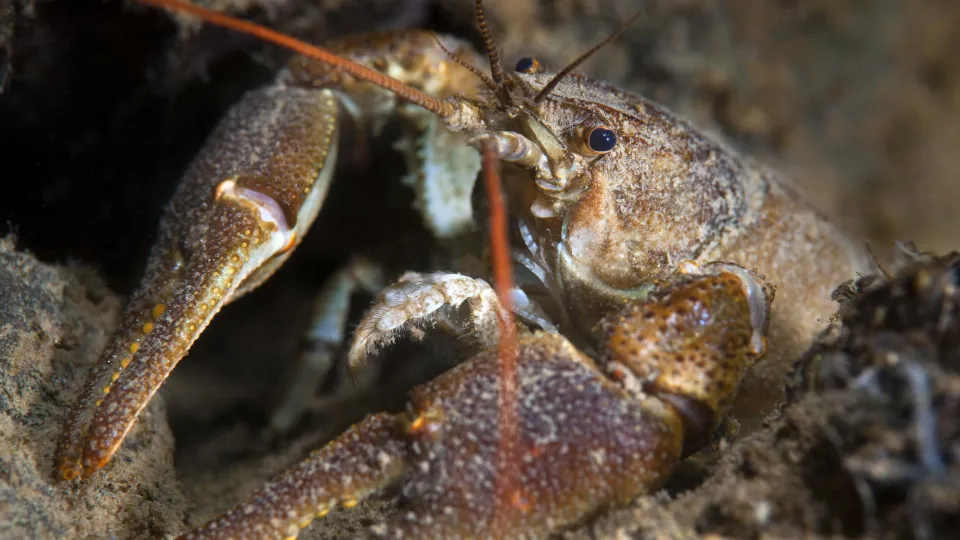
The White-clawed crayfish is a freshwater, bronze-coloured crustacean with pale undersides to its claws - hence the name. It is under threat from an invasive and introduced species of crayfish.

The river lamprey is a primitive, jawless fish, with a round, sucker-mouth which it uses to attach to other fish to feed from them. Adults live in the sea and return to freshwater to spawn.
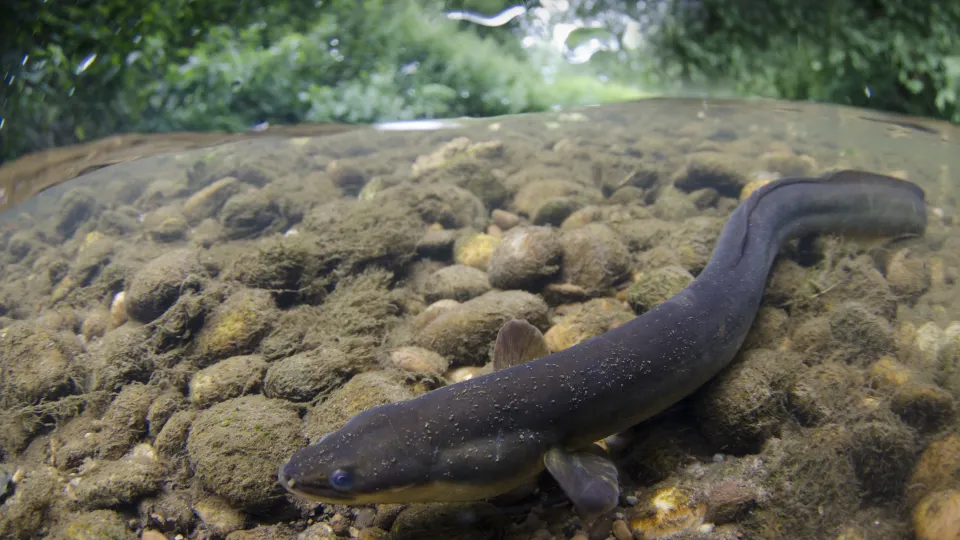
The eel is famous for both its slippery nature and its mammoth migration from its freshwater home to the Sargasso Sea where it breeds. It has suffered dramatic declines and is a protected species.
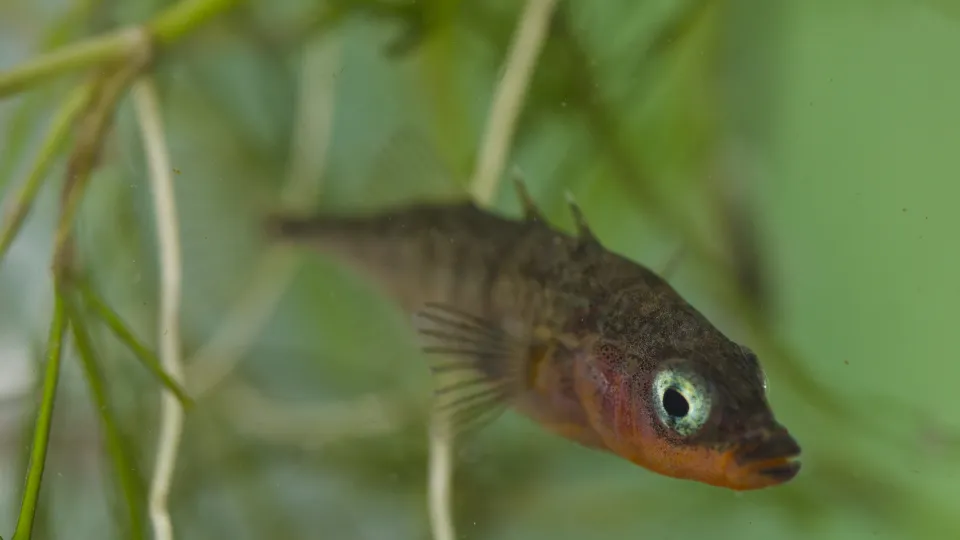
A diminutive but aggressive predator, the three-spined stickleback hunts tadpoles and small fish. It is also known for fiercely protecting its nest of eggs until they hatch. Look for it in ponds, lakes and rivers.